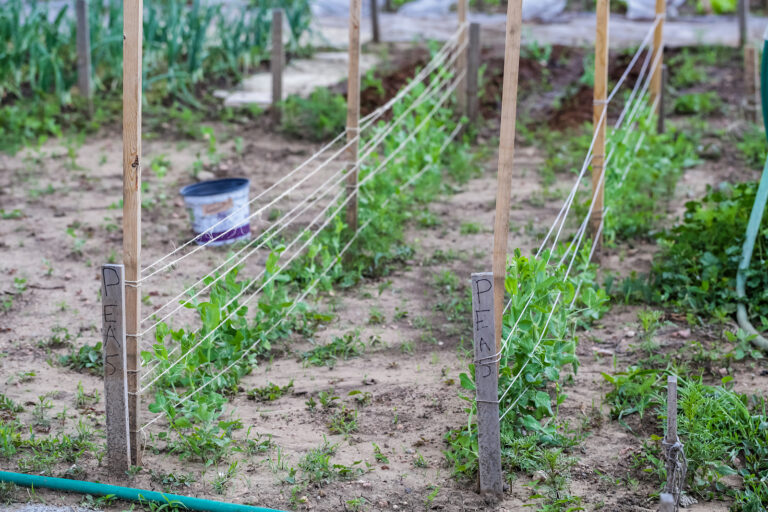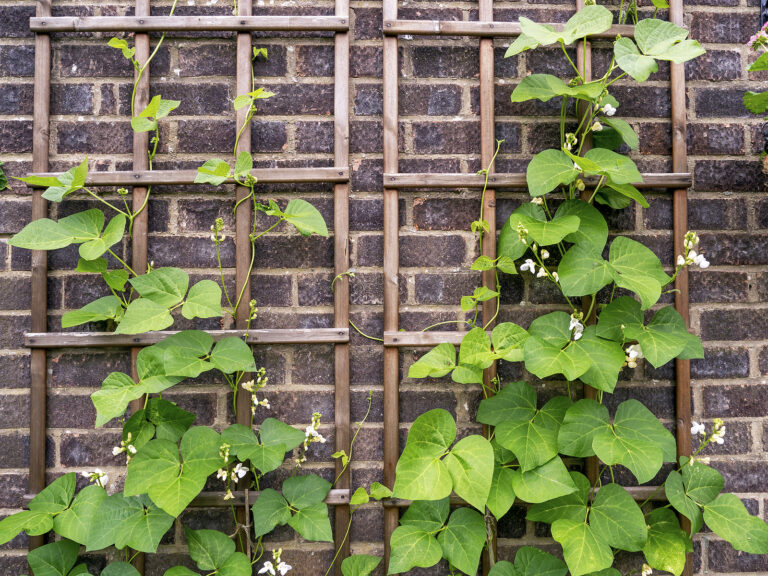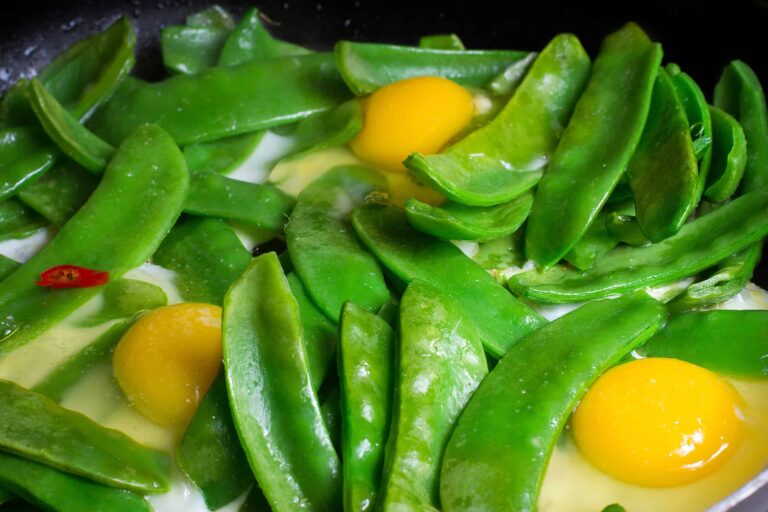You Can Grow Chickpeas in Containers: What Works—and What Doesn’t
Growing chickpeas—garbanzo beans—in containers is not only possible but surprisingly productive when you understand what the plants need. After decades of experimenting with legumes in raised beds, fabric pots, and patio containers, I’ve learned that chickpeas thrive in pots only when you match their natural habits: deep taproots, cool-season growth, and light, fast-draining soil. Here’s what works—and what doesn’t—when growing chickpeas on a patio, balcony, or small-space garden.
Why Chickpeas Can Grow Well in Containers
Chickpeas are one of the few legumes that tolerate cool conditions, light frost, and lower fertility—making them well-suited to containers where soil warms quickly and nutrients are more controlled. Their compact height (18–24 inches) and branching habit make them natural candidates for pot culture if the container is deep enough.
I’ve grown chickpeas in 5-gallon, 10-gallon, and 20-gallon containers over the years, and the most successful crops come from matching plant density to pot size.
What Works for Container-Grown Chickpeas
1. Deep Containers
Chickpeas develop a strong taproot early. Containers should be at least:
- 12–14 inches deep minimum
- 10 gallons ideal for best yields
Fabric pots and standard nursery containers both work, but fabric pots drain better and encourage better root aeration.
2. Light, Well-Drained Potting Mix
Use a premium potting soil—not garden soil—to avoid compaction. A mix containing peat or coir, compost, and perlite works exceptionally well. Chickpeas do not need rich soil; too much fertility, especially nitrogen, will delay flowering.
3. Early Planting
Chickpeas grow best in cool conditions. In containers, I’ve had the best results sowing seeds:
- 4–6 weeks before the last frost in mild climates
- At last frost in cooler regions
Containers warm quickly, so early planting helps chickpeas bloom before summer heat reduces pod set.
4. Direct Sowing in the Container
Chickpeas dislike root disturbance, so transplanting often results in stunted plants. Sow seeds directly into the container whenever possible.
5. Correct Spacing
Because of branching, chickpeas need more room than you might think. Reliable spacing rules:
- 3–4 plants per 10-gallon pot
- 1–2 plants per 5-gallon pot
Equidistant spacing prevents overcrowding and improves airflow.
6. Light Watering
Chickpeas prefer drier soil once established. Water only when the top 1–2 inches are dry. Overwatering leads to lush foliage but few pods.
What Doesn’t Work When Growing Chickpeas in Containers
1. Small, Shallow Pots
Anything under 10 inches deep restricts root growth. Plants stall early, flower poorly, and may collapse in warm weather.
2. Rich, Fertilizer-Heavy Soil
High-nitrogen potting mixes or regular feedings produce too much leaf growth. Chickpeas perform better with minimal fertilizer—just a little compost at planting is enough.
3. Mid-Summer Planting
Chickpeas dislike heat. Container-grown plants heat even faster than in-ground plants, leading to dropped flowers and empty pods.
4. Overcrowding
More than three plants in a 10-gallon pot dramatically reduces pod production. The plants compete for root space and water.
5. Frequent Watering
Chickpeas are drought-tolerant. Keeping the soil constantly moist invites root rot and encourages vegetative growth at the expense of pods.
6. Shade
Chickpeas need full sun—at least 6 hours daily. Shade, especially afternoon shade, significantly reduces yields.
My Recommended Container Setup
Here’s the setup that’s given me the most reliable harvests over the years:
- Container: 10–15 gallon fabric pot
- Depth: 14+ inches
- Soil: Light potting mix with 10–20% compost
- Planting: Direct sow 3–4 seeds, thin to 3 plants
- Timing: Early spring as soon as nights stay above 28–30°F
- Water: Deep water every 5–7 days depending on weather
- Support: Low ring or small stake can help in windy areas
This setup mimics the loose, cool, well-drained conditions chickpeas love in the ground.
Growing chickpeas in containers is absolutely doable—and rewarding—when you tailor your approach to the plant’s natural growth habits. With the right pot, early planting, and careful watering, you can enjoy a compact, productive crop right on your patio or balcony.
Chickpea Learning Hub
Start Here / Overview
- Mastering Chickpeas: Planting, Growing, and Harvesting Tips
- How to Plant, Grow, and Harvest Chickpeas (Garbanzo Beans): The Complete Guide
Planning & Planting
- Best Chickpea Varieties to Grow: Kabuli, Desi, Black, and Specialty Types
- Short-Season Chickpeas: Best Varieties and Tips for Cooler Climates
- When to Plant Chickpeas: Temperature, Frost Windows, and a Month-by-Month Calendar
- How to Start Chickpeas From Seed: Indoors, Outdoors, and Spacing Tips
- Can You Grow Chickpeas in Containers? What Works—and What Doesn’t
- Growing Chickpeas in Raised Beds
- Best Companion Plants for Chickpeas (and What to Avoid)
Care & Maintenance
- How to Water and Feed Chickpeas for Maximum Pod Production
- Chickpea Care Guide: Weeding, Mulching, Trellising, and Seasonal Maintenance
Pests, Diseases & Troubleshooting
- Chickpea Pests: Identification, Prevention, and Organic Controls
- Chickpea Diseases and How to Prevent Them: Blight, Mosaic, Anthracnose & More
- Troubleshooting Chickpeas: Why Plants Fail, Don’t Flower, or Don’t Make Pods
Harvesting & Post-Harvest
- Harvesting Chickpeas: Fresh Green Pods vs. Dried Beans
- How to Store and Preserve Chickpeas: Fresh, Dried, Canned, or Frozen
Cooking & Enjoying




